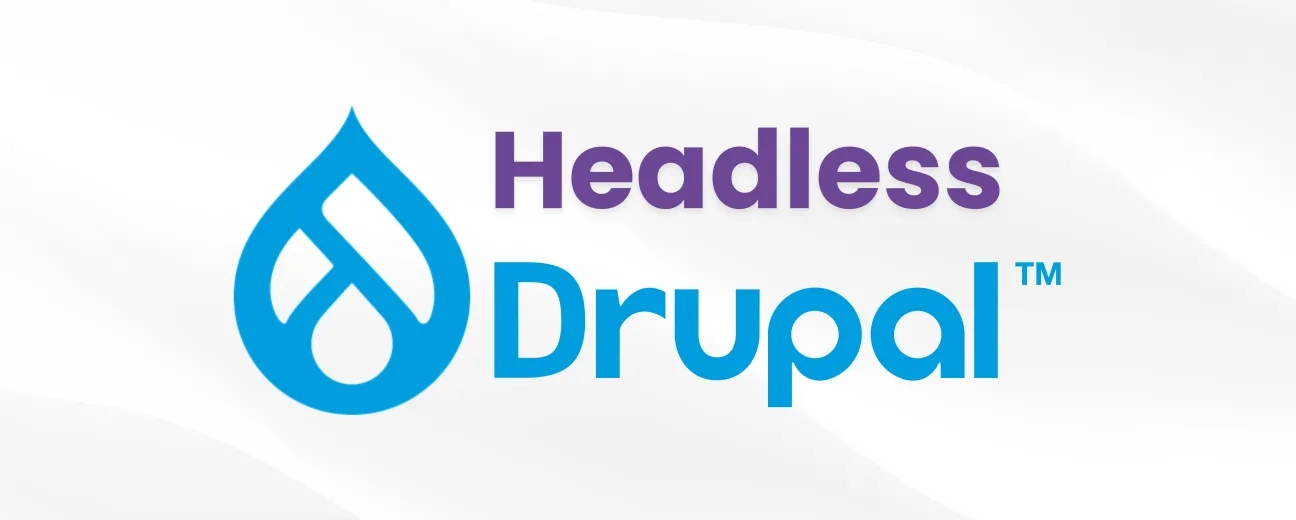
We’re excited to hear your project.
Let’s collaborate!

Consumers today expect seamless experiences across every touchpoint. However, for many businesses, delivering on this promise is a complex challenge.
Traditional CMS platforms, weighed down by monolithic architectures, are struggling to keep pace with the rapid evolution of digital channels.
This is where headless Drupal comes in.
This innovative content management approach is revolutionizing how organizations create and deliver digital experiences. By decoupling the backend from the frontend, headless Drupal empowers businesses to build highly flexible, scalable, and performant digital platforms.
I'm Nazanin Ghasemi, a marketing expert at OPTASY with over five years of experience in digital marketing. I specialize in B2B sectors and have a strong track record of running successful digital campaigns, managing substantial advertising budgets, and creating strategic content initiatives.
Today, I’m exploring the importance of leveraging headless Drupal for omnichannel experiences by interviewing experts from OPTASY: Daniel Rodriguez, Full-Stack Drupal Developer, Scott Carpenter, Senior Drupal Developer, and Dinu Rodnitchi, Senior Developer.
Headless Drupal separates the content management backend from the presentation layer.
In a headless setup, Drupal handles content creation, storage, and management, while a separate frontend framework (such as React, Angular, or Vue.js) manages content presentation.
Unlike traditional CMS platforms, where the backend and front end are tightly integrated, headless Drupal leverages APIs to deliver content to various devices and platforms. This architecture provides significant benefits, including:
Legacy systems and traditional CMS platforms often struggle to meet the demands of modern content delivery. They can be inflexible, slow, and challenging to integrate with new technologies. Headless Drupal addresses these pain points by empowering businesses to:
Migrating from a traditional CMS to headless Drupal involves several technical considerations. Dinu Rodnitchi, Senior Developer at OPTASY, emphasizes the importance of changing the site structure: "The first and most important consideration is that we will have to split the themes, making a clear separation between backend and frontend."
Daniel Rodriguez, Full-Stack Drupal Developer at OPTASY, adds a crucial point: "It's not a very good idea to make the Drupal site 100% headless. There are complexities, but certain important resources, like the homepage, should be headless for performance boosts."
Key considerations include:
Scott Carpenter, Senior Drupal Developer at OPTASY, adds, "Migrating to headless Drupal is like any other website project. The key consideration is how you build the frontend."
OPTASY's expertise in managing complex migrations ensures a smooth transition. They help organizations migrate their Drupal websites by:
Organizations across various industries have successfully implemented headless Drupal for omnichannel experiences. These implementations have led to measurable results, such as improved website traffic, increased conversions, and higher customer satisfaction.
OPTASY has played a pivotal role in guiding clients through the implementation process, ensuring seamless and effective deployment.
OPTASY helps by:
Optimizing the performance of headless Drupal applications involves several best practices:
Dinu Rodnitchi highlights key performance factors: "The first one is caching. Make sure that everything is cached. Second, make sure we're not rendering hidden components. Finally, use a CDN to improve performance."
Scott Carpenter adds, "The performance of headless Drupal depends on how the frontend is built and the caching processes used. Proper backend characteristics and caching make the difference."
Daniel Rodriguez points out, "Headless Drupal can boost performance because you are not reliant on the templating system for displaying pages. Instead, you use a JavaScript framework for the frontend, which consumes fewer server resources."
OPTASY stands out in building and maintaining high-performance Drupal applications, leveraging these best practices to deliver superior results. Some of the best practices used by OPTASY include:
Transitioning to headless Drupal can present challenges such as content governance, API management, and integration complexities. However, practical solutions and strategies can overcome these hurdles.
Dinu Rodnitchi points out the importance of setting up Cross-origin resource sharing (CORS) correctly and authenticating clients: "The first one is to make sure we are setting up the CORS correctly. The second one is authenticating the clients."
Scott Carpenter adds context to the security aspect: "Security in headless Drupal is similar to any website. It involves ensuring proper cookies and frontend application security measures."
Daniel Rodriguez emphasizes the flexibility headless Drupal offers: "By going headless, you're not relying on Drupal's templating system. Instead, you use frameworks like React or Angular, giving developers and stakeholders the flexibility to create templates as they want."
OPTASY's expertise ensures that any technical concerns are addressed effectively, providing reassurance to organizations considering the shift.
To gauge the success of omnichannel efforts with headless Drupal, organizations should track key performance indicators (KPIs) such as:
Scott Carpenter emphasizes the importance of defining KPIs: "Measuring success depends on the KPIs set by the organization. It's part of their scope to define what success looks like."
OPTASY assists clients in monitoring and analyzing performance data, driving continuous improvement in their omnichannel strategies.
Headless Drupal offers significant benefits for technical decision-makers, including flexibility, scalability, and enhanced performance.
OPTASY's expertise in headless Drupal development and implementation positions them as a leader in delivering exceptional digital experiences.
Contact OPTASY for a free consultation or to download relevant resources and take the first step towards a future-proof omnichannel strategy.

We’re excited to hear your project.
Let’s collaborate!